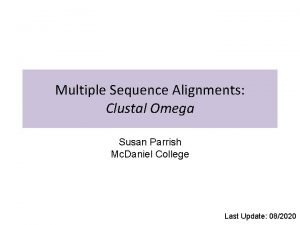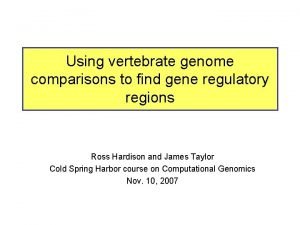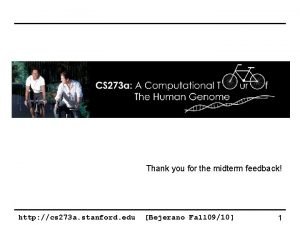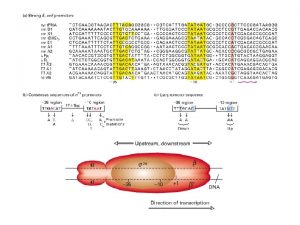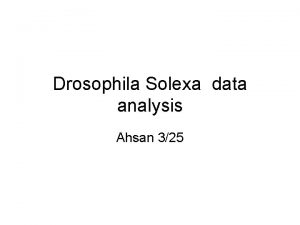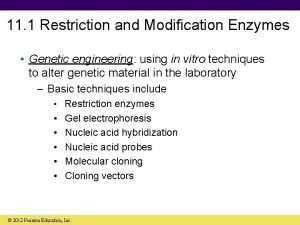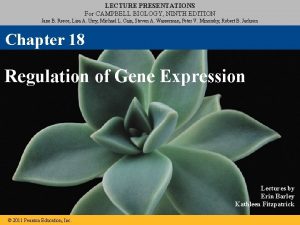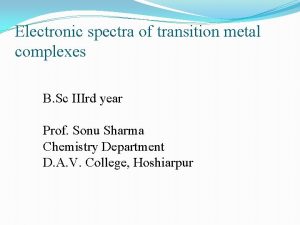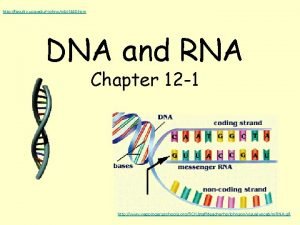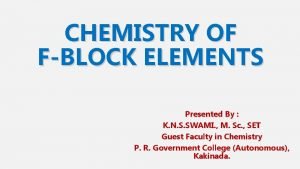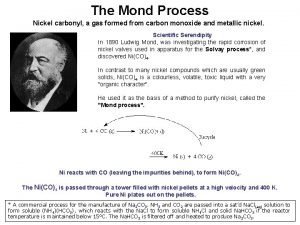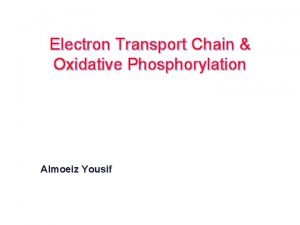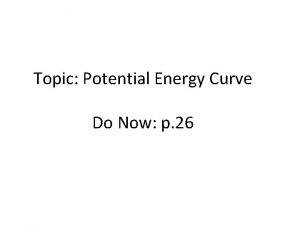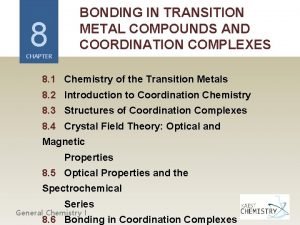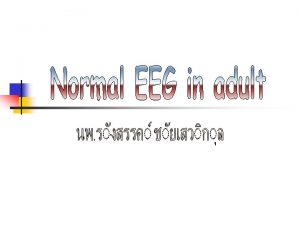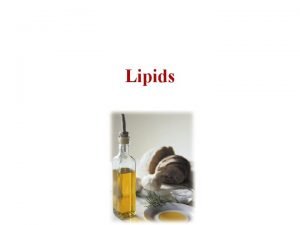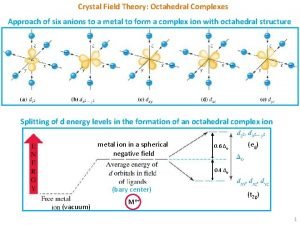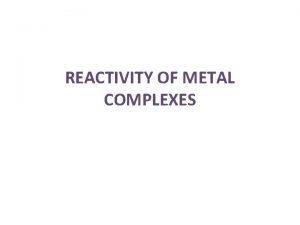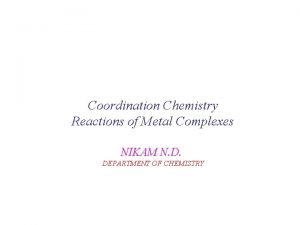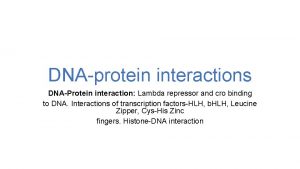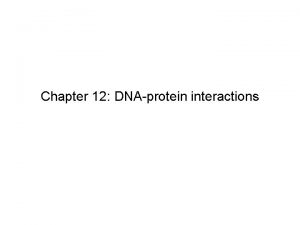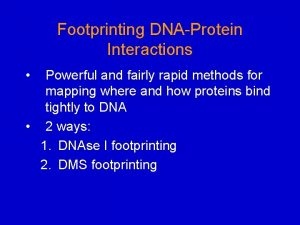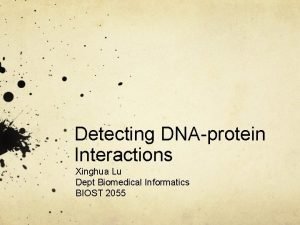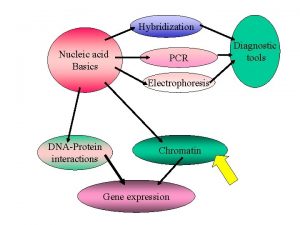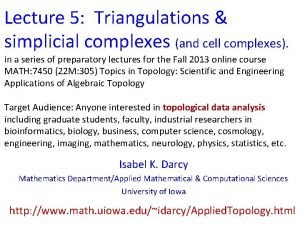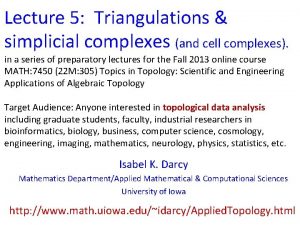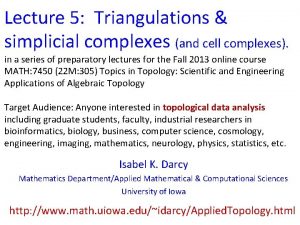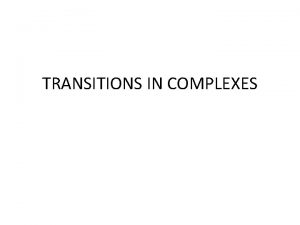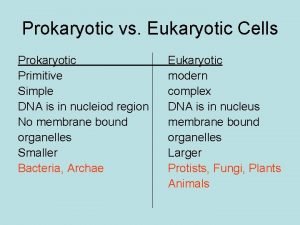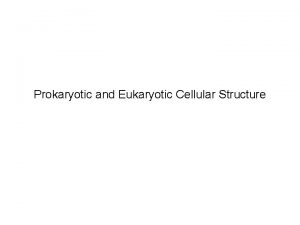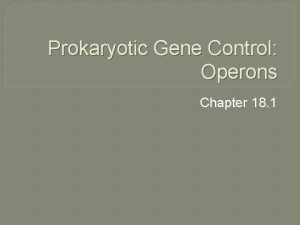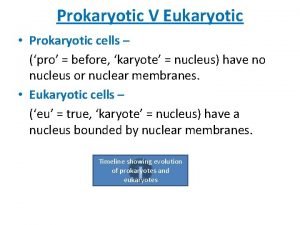DNAProtein Interactions Complexes Prokaryotic promoter Consensus sequence is































- Slides: 31

DNA-Protein Interactions & Complexes





Prokaryotic promoter Consensus sequence is not present in majority of prokaryotic promoters. Sequence motifs encompassing 6 -10 nucleotides are degenerate; Probability of finding similar sequences in regions other than promoters is quite high. Harley and Reynolds (1987) Nucleic Acids Res. 15(5): 2343 -2361. 6

Sequence logo for B. subtilis, E. coli and M. tuberculosis promoter sequences No sequence conservation 7

Does this indicate that there are other signals which help in positioning RNA polymerase? Hence analysis of structural properties of a DNA sequence to locate signals that are: • Relevant to transcription from a functional/mechanistic/structural point of view. • Unique to the promoter sequences and can be used to differentiate between promoter and non-promoters. • Can be predicted from a given sequence. For example: 1) DNA STABILITY (Ability of DNA to Open up) 2) DNA CURVATURE (Intrinsically curved DNA structure) 3) DNA BENDABILITY (Ability of DNA to bend)

Why Stability? • An important step in transcription is the formation of an open complex which involves strand separation of DNA duplex upstream of the transcription start site (TSS) • This separation takes place without the help of any external energy. • Hence evaluating stabilities of promoter sequences may give some clues.

Stability of base paired dinucleotides based on Tm (melting temp data) on a collection of 108 oligonucleotide duplexes. Santa. Lucia J (1998) Proc. Natl. Acad. Sci. USA 95(4): 1460 -1465.

A representative free energy profile for 1000 nt long E. coli promoter sequence



DNA bendability DNA Protein


TATA-containing promoters show different structural properties from TATA-less promoters The average free energy, Dnase 1 sensitivity, Nucleosome positioning preference and curvature profiles of S. cerevesiae promoters w. r. t TSS. TATAcontaining promoters are less stable (fig a), highly bendable (fig b) and more curved (fig d) as compared to TATA-less promoters. The nucleosome positioning preferences (fig c) are only slightly different.

• Different DNA binding helix turn helix protein motifs














 Eukaryotes vs prokaryotes
Eukaryotes vs prokaryotes Gene annotation
Gene annotation Cluster omega
Cluster omega Enhancer promoter
Enhancer promoter Enhancer vs promoter
Enhancer vs promoter Santral dogma
Santral dogma Erlanger v new sombrero phosphate co
Erlanger v new sombrero phosphate co Promoter is a person who *
Promoter is a person who * Initiator promoter
Initiator promoter Tugas promoter
Tugas promoter Lac promoter
Lac promoter Tata box
Tata box Exon intron promoter
Exon intron promoter Orgel diagram is used for
Orgel diagram is used for A ________ is formed from beadlike histone-dna complexes.
A ________ is formed from beadlike histone-dna complexes. Lanthanides have poor tendency to form complexes
Lanthanides have poor tendency to form complexes Monds process
Monds process Optical isomerism in octahedral complexes
Optical isomerism in octahedral complexes Slidetodoc.com
Slidetodoc.com Activation complex
Activation complex Spectrochemical series
Spectrochemical series Oedipus complex and electra complex
Oedipus complex and electra complex Eeg eye
Eeg eye Spherical complexes of emulsified fats are known as
Spherical complexes of emulsified fats are known as Splitting in octahedral complexes
Splitting in octahedral complexes Tasco maquina simple
Tasco maquina simple Labile and inert complexes examples
Labile and inert complexes examples Racah parameter ppt
Racah parameter ppt Man camps in texas
Man camps in texas Inert and labile complexes
Inert and labile complexes Phrase complexe
Phrase complexe Voyelles complexes
Voyelles complexes


